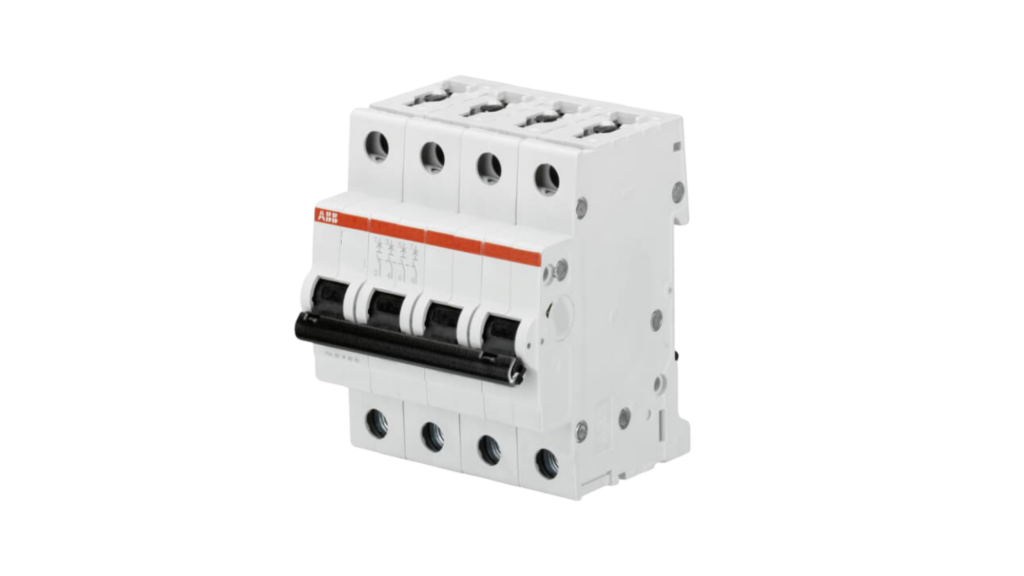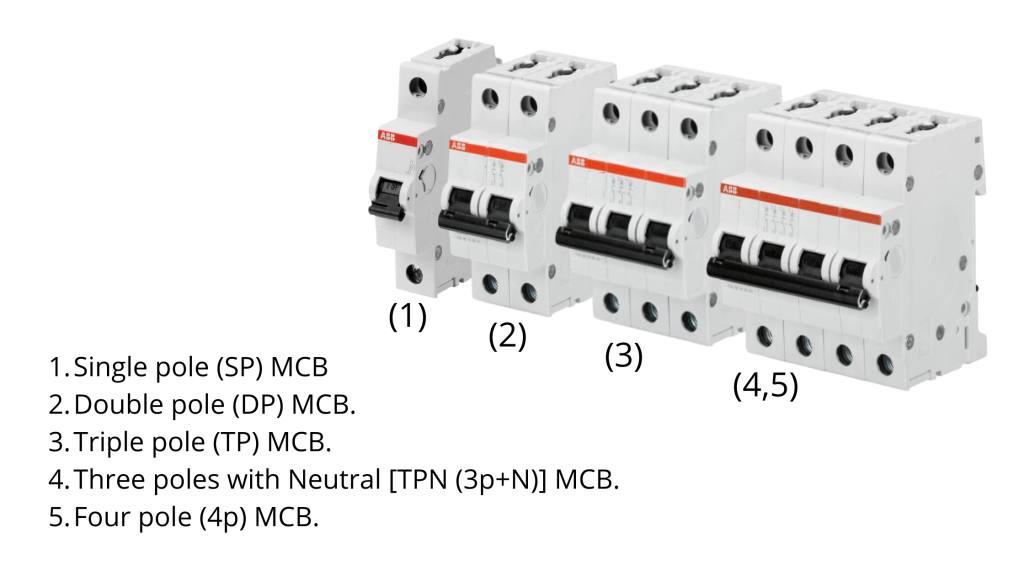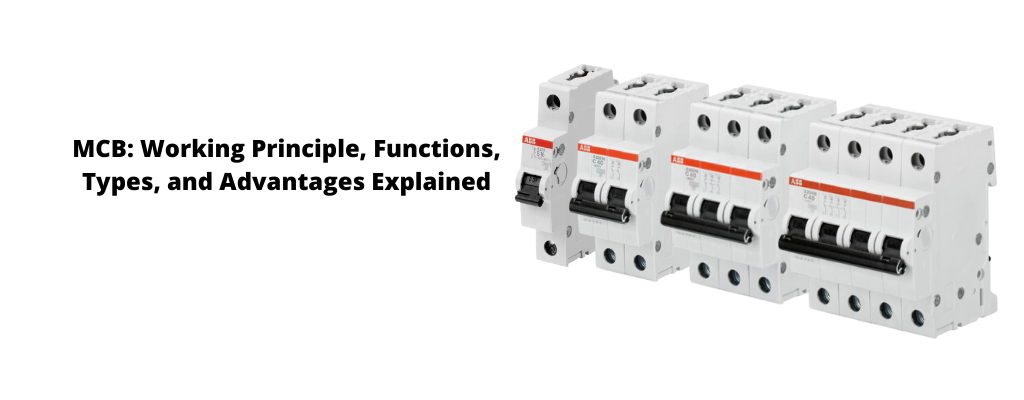MCB: Working Principle, Functions, Types, and Advantages Explained
Any mishap due to over current, overload or short circuit can be really dangerous. Instead of waiting for an accident to happen, it is always better to prevent such mishaps by safeguarding your circuitry, appliances, and loved ones through adequate switchgear in advance.
Earlier people used fuses to protect their electrical equipment and networks. With technological advancement, MCBs emerged on the scene and replaced the fuses at least in domestic applications. And why not, these mechanically operated switches cum circuit protection devices work perfectly well to suspend power supply in circuits during overload and short circuits while keeping you safe and sound. Moreover, these can be reused even after interruption of the circuit, unlike fuses.
Table of Contents
- What is MCB?
- Working Principle of MCB
- Current Rating, Voltage Rating, and Breaking Capacity of MCB
- Advantages of MCB
- Advantages of MCB over Fuse
- Applications of MCB
- Types of MCB
- Factors to consider while purchasing MCBs
What is MCB?

MCB is an automatically operated electromechanical switch that is specially designed to protect an electrical circuit from damage caused by the excess current in case of an overload or short circuit condition. The basic function of MCB is to interrupt current flow in the circuit after a fault is detected. It breaks the contact of the circuit from supply if the supply current exceeds the rated current of MCB.
This contact-breaking operation of MCB helps a lot to secure the circuit from faults and thus helps to protect other electrical devices connected with the fault circuit. MCBs are reusable even after interruption of the circuit and they are more sensitive to faults. It is generally used in electric panels and distribution boards to control small loads.
Miniature Circuit Breakers protect installations against overload and short-circuit, guaranteeing reliability and safety for operations. The System pro-M compact series ABB MCBs are current-limiting overcurrent protective devices.
Working Principle of MCB
MCBs is a compact cased device and they have two different tripping mechanisms, the delayed thermal tripping mechanism for overload protection and the magnetic tripping mechanism for short circuit protection
The working principle of the MCB is based on two effects-
- Electromagnetic Effect.
- Thermal Effect
Also, there are essentially three different mechanisms that provide overload and short circuit protection.
- Bimetallic Strip :
Thermal effect takes place whenever the condition of overload occurs in the electrical circuit. This bimetallic strip arrangement is used in situations where a constant overload condition prevails over a long time in the connected circuit thus resulting in heating of the bimetallic strip. Overheating of the bi-metallic strip results in the deformation of the strip i.e. the bimetallic strip bends further than the predefined level due to which latch mechanism is released and contacts get open. The moving contact of the MCB is arranged by means of spring pressure. The displacement of the latch point causes the attached spring to get released and the moving contactor opens the circuit. - Magnetic Trip Coil :
This mechanism comes in force in case of a short circuit event. This mechanism works on the Electromagnetic effect. A short circuit event is associated with a sudden surge of a heavy short circuit current that tends to flow through the circuit. When this sudden surge of short circuit current flows through a very sensitive magnetic trip coil inside MCB i.e through the solenoids, a sudden change in magnetic flux occurs and it activates the trip coil unit. Due to this, the plunger inside the coil deflects and attracts upwards which in turn releases the latch mechanism. The magneto-motive force (MMF) of the coil causes its plunger to hit the same latch point and to displace the latch point. The displacement of the latch point causes the attached spring to get released and the moving contactor opens the circuit. - Manual Switching :
MCB also has an external ON/OFF switching option to manually break the circuit. This is used in cases of any maintenance or repair activities or for resetting of MCB in case of an already occurred trip event.
It may be due to deformation of a bi-metallic strip, or increased MMF of a trip coil, or maybe a manual operation, but every time the same latch point is displaced and the same deformed spring is released, which ultimately responsible for the movement of the moving contact. When the moving contact is separated from fixed contact, there may be a high chance of arc. Again, when we switch it on, we reset the displaced operating latch to its previous position i.e on position and the MCB is ready for another trip operation.
Under normal working condition the current flow through the incoming terminal, fixed & moving contacts, solenoid, bimetallic strip and then the outgoing terminals.
Current Rating, Voltage Rating and Breaking Capacity of MCB
0.5A TO 125A, 6KA to 36KA and 24V TO 440V AC and DC, PV 1000V and 1500V DC.
Advantages of Miniature Circuit Breakers
Being sensitive to over current, MCB automatically cuts off the power supply during overload and faulty conditions. Unlike MCBs, a fuse is not that sensitive to faulty conditions.
As the MCB trips, while breaking the supply of electrical circuits, the switch operating knob comes at OFF position which makes it easier to identify the faulty zone of the electrical circuit.
However, in the case of a fuse, the fuse wire needs to be checked by opening fuse grip or cutout from fuse base, for confirming the blow of fuse wire.
- MCBs allow quick restoration of power supply
by just switching ON the operating knob. In case of a fuse, it needs to be rewired or replaced for restoring the power supply.
- MCBs are safer than a fuse.
Since MCBs offer improved operational safety and more convenience than the old-school fuse, MCBs are commonly used in low voltage electrical networks.
- MCBs offer better protection against electrical faults
It is wise to invest in them. Their procuring cost could appear more at the outset, but the operating cost is much lesser.
Advantages of MCB over Fuse
Both MCB and Fuse are protecting devices. But the advantages of MCB over fuse are-
- MCBs are much more sensitive to faults than fuses.
- They act faster than fuse during short circuits.
- Offer better overload protection than fuses.
- Rreusable even after interruption of the circuit after an overload or short circuits. MCB resets after the clearance of fault whereas fuses need to be rewired or replaced.
- Offers a safer interruption of short-circuit current and arc quenching.
- As the switch operating knob of the MCB comes at its off position during tripping, the faulty zone of the electrical circuit can easily be identified whereas fuse wire should be checked by opening fuse grip or cutout from fuse base.
- They can be turned off whenever needed. Therefore, MCB provides much easier circuit isolation during maintenance than fuses.
- Handling MCB is electrically much safeer than a fuse.
Because of too many advantages of MCB over fuse units, in modern low voltage electrical networks, MCBs are mostly used as an alternative to fusing units.
Applications of MCB
The Miniature Circuit Breaker (MCB) is frequently utilized in low-voltage applications such as household lighting and industrial solar panels to protect installations against overload and short-circuit. It can make or break the electrical circuit under normal as well as abnormal conditions.
Building, Traction, Railways, UPS, Solar, Machin OEMs, Distribution and Industrial panels
Types of MCBs
MCBs can be classified as follows depending on their tripping mechanism:
- Type B
- Type C
- Type D
- Type K
- Type Z
Based on the number of poles MCBs can be categorized as
- Single pole(SP) MCB
- Double pole(DP) MCB.
- Triple pole(TP) MCB.
- Three poles with Neutral [TPN(3p+N)] MCB.
- Four pole(4p) MCB.

Factors to be considered before procuring MCBs.
If you are about to procure MCBs then here are some key features to consider for ensuring maximum safety of property and human life.
- Safety Terminals
You may have a really good quality MCB and power cable running to it, but if your electrician fails to properly terminate the cable into its input and output terminals, it can lead to failure of the MCB and a hazardous incident. Safety terminals eliminate the possibility of improper termination as the cage guides the cable for systematic termination.
- Large Cable Terminations
Cables terminating into an MCB made from copper or aluminum can be as thick as 35mm2 in the cross-section area. Large termination ports help in proper termination that is a must for ensuring the reliable functioning of an MCB during an incident.
- Cooler Operation
India is a country with a varied climate. The summers could be excruciating where the outside temperature may reach upwards of 50 °C. The temperature inside an MCB with a passing current can be even higher. So, it becomes critical for a good MCB design to feature an efficient design that cools the entire MCB unit while it is in operation. An MCB with grooves on the outer body will promote better air circulation inside when individual poles are placed adjacent to each other, cooling the overall switch operation.
- High-quality MCB Enclosure
What is the point of an MCB having all the bells and whistles if it can’t hold its components in place and disintegrates or catches fire during a short-circuit or overload? A good quality MCB is usually made of high-precision molded thermoplastic material. It should possess flame-retardant properties having a high melting point, high dielectric strength, lower water absorption, and the ability to withstand high temperatures.
Micronova – A Trusted Dealer and Distributor for ABB MCBs
Micronova, a trusted name in the world of electrical equipment, offers a vast selection of high-quality MCBs for different voltage requirements. You can choose from high rating MCBs, mini MCB isolators, isolator switching devices, and indicator lights to safeguard your appliances.
Made abiding by the prescribed safety norms using the latest technology, MCBs by Micronova are equipped for de-energizing the circuits and preventing faults. If you haven’t installed them yet, get the best-quality MCBs and safeguard yourself and your world from any electrical accident.


Comments (2)
Hi
BestMCB blog i have came across